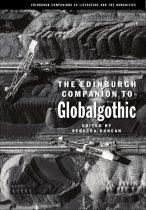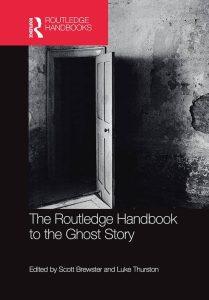2023
 This article discusses three major media forms that drive the globalisation of Asian Gothic: literature originally written in English, film, and original television series created specifically for global SVOD platforms like Netflix, Amazon Prime or HBO Go. The article focuses in more detail on three texts: a novel Ponti (2018) written by a Singaporean author Sharlene Teo, discussed in a larger context of texts featuring a Malay monster known as the pontianak; a Taiwanese film The Tag-Along (Cheng 2015) examined in relation to other East Asian films that feature forest-dwelling child-like spirits/demons that imitate human voice and lure their victims into the wilderness; and an Indonesian mini-series Halfworlds (2015) produced by HBO Asia and directed by Joko Anwar, which will be situated in the context of the director’s overall engagement with folk horror. The article argues that such productions promote an understanding of globalgothic in terms of texts that reconfigure elements of Gothic in order to negotiate transnational relationships from the socio-historical or cultural vantage point of a certain region, in this case the regions of East and Southeast Asia, and that these texts are to a large extent the results of specific production and distribution practices and strategies characteristic of global media.
This article discusses three major media forms that drive the globalisation of Asian Gothic: literature originally written in English, film, and original television series created specifically for global SVOD platforms like Netflix, Amazon Prime or HBO Go. The article focuses in more detail on three texts: a novel Ponti (2018) written by a Singaporean author Sharlene Teo, discussed in a larger context of texts featuring a Malay monster known as the pontianak; a Taiwanese film The Tag-Along (Cheng 2015) examined in relation to other East Asian films that feature forest-dwelling child-like spirits/demons that imitate human voice and lure their victims into the wilderness; and an Indonesian mini-series Halfworlds (2015) produced by HBO Asia and directed by Joko Anwar, which will be situated in the context of the director’s overall engagement with folk horror. The article argues that such productions promote an understanding of globalgothic in terms of texts that reconfigure elements of Gothic in order to negotiate transnational relationships from the socio-historical or cultural vantage point of a certain region, in this case the regions of East and Southeast Asia, and that these texts are to a large extent the results of specific production and distribution practices and strategies characteristic of global media.



 This chapter traces the development of the Chinese-style ghost story in Asian literatures from the classical Chinese genres of zhiguai, and chanqui, through their transformation into Japanese kaidan, to contemporary versions of them. It discusses the structural characteristics and shared themes of such stories, and argues that their modern reincarnations can be divided into reproductions (where contemporary stories are written in a style closely resembling older texts), utilizations (where contemporary authors make use of their audience’s knowledge of the old texts), and hybridizations (where contemporary stories alter older texts, introducing elements of local folklore, modern settings, or other literary influences). As the name suggests, stories of the strange relate to all manner of extraordinary phenomena. To simplify things, the discussion will be limited to the stories that understand ghosts as the returning spirits or souls of the deceased, often taking very material forms in their interactions with humans. The ghosts in question should also be understood as individuals rather than a collective entity, even when they are described as one’s ancestors.
This chapter traces the development of the Chinese-style ghost story in Asian literatures from the classical Chinese genres of zhiguai, and chanqui, through their transformation into Japanese kaidan, to contemporary versions of them. It discusses the structural characteristics and shared themes of such stories, and argues that their modern reincarnations can be divided into reproductions (where contemporary stories are written in a style closely resembling older texts), utilizations (where contemporary authors make use of their audience’s knowledge of the old texts), and hybridizations (where contemporary stories alter older texts, introducing elements of local folklore, modern settings, or other literary influences). As the name suggests, stories of the strange relate to all manner of extraordinary phenomena. To simplify things, the discussion will be limited to the stories that understand ghosts as the returning spirits or souls of the deceased, often taking very material forms in their interactions with humans. The ghosts in question should also be understood as individuals rather than a collective entity, even when they are described as one’s ancestors.